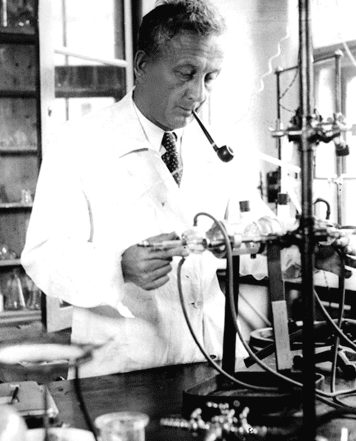
The Discovery of Dihydroquercetin (Taxifolin)
In 1814, the French explorer Michael Eugene Chevrel isolated the first flavonoid, later called quercetin. In Russia, the study of flavonoids was initiated by the famous botanist Ivan Borodin in 1873.
A new stage in the research of bioflavonoids began in 1936 when the American scientist of Hungarian origin Szent-Györgyi Albert (who later received the Nobel Prize in Medicine “for research on biological oxidation, and especially for the discovery of vitamin C and fumaric acid catalysis”) and Istvan Rusniak found that a complete cure of scurvy was possible only when vitamin C was combined with another substance that increased capillary resistance, and they isolated this substance (from citrus fruits) and called it vitamin P. Later it turned out that vitamin P is not a single substance, but a number of compounds, and the name “Vitamin P” was replaced by the term “Bioflavonoids”.
In the late 1940s, the Oregon Forest Products Laboratory (USA) began investigating the chemical composition of the bark of western pine trees in order to determine its possible uses. One of the first species to be thoroughly studied was Douglas-fir bark, where a bioflavonoid with a very powerful antioxidant effect was found and identified as Taxifolin, also known as Dihydroquercetin (Pew, John C., 1947). For a long time it was believed that Dihydroquercetin (DHQ) was found only in expensive raw materials such as citrus fruits, grape seeds, Japanese Sophora, rose petals, and stems of Gingko biloba.

Michael Eugene Chevrel
The level of development of laboratory and industrial techniques of the XX century did not allow to obtain bioflavonoids, including Dihydroquercetin, in large quantities, which put a barrier to their wide implementation in preventive and clinical medicine. The obstacle was expensive raw materials, small production volumes and, accordingly, extremely high market value on the world market.

Szent-Györgyi Albert
In the late 1960s, Professor N.A. Tyukavkina with a group of scientists from The Irkutsk Institute of Organic Chemistry of the Siberian Branch of the Academy of Sciences (K.I. Lapteva, L. A. Ostroukhova) together with scientists from St. Petersburg State Forestry University named after S. M. Kirov (S. D. Antonovskaya) and The V. N. Sukachev Forest Institute of Siberian Branch of RAS (G. D. Antonova) for the first time isolated dihydroquercetin from larch wood.
The uniqueness of this scientific discovery was that the substance from the plant was obtained not in the form of a tincture, ointment, extract (extract), as is customary to use phytopreparations, but in the form of an individual substance – a crystalline powder. Now it became possible to use it in capsules or pills, in concentrations hundreds of times greater than those of the former extracts. So, there was a revolution in the study of bioflavonoids; a natural active substance, which could easily compete with synthetic drugs, was obtained.
Today, the main raw material for obtaining DHQ on an industrial scale is the Siberian larch (Larix Sibirica Ledeb) and Dahurian larch (Larix Dahurica Turcz). Larch wood contains up to 2.5% of flavonoids. DHQ accounts for 90-95% of the total flavonoid content.
Numerous laboratory and clinical studies have shown that Dihydroquercetin, isolated from larch, has a high antioxidant activity, much higher than previously known to science natural analogues.
*These statements have not been evaluated by the Food and Drug Administration. This product is not intended to diagnose, cure, or prevent any disease.
